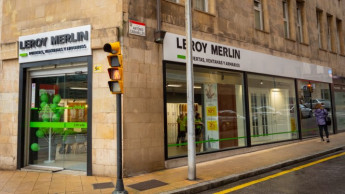The European windows market fell in the year 2002 to around 71.6 mio units, which amounts to sales of approximately € 16.4 bn
PVC domination
PVC windows are the most successful products in the European market when the material for frames is taken into consideration: they attained a market share of 41.7 per cent in terms of volume in 2002. However, the market share in terms of value came to 36.4 per cent as a result of their relatively low average price. Metal windows (mainly aluminium) achieve a volume market share of 28.0 per cent and 29.9 per cent by value; wooden windows cover 25.0 per cent of the market by volume and 26.6 per cent by value. Combination wood and aluminium windows achieve a market share of 5.3 per cent (volume) and 7.1 per cent (value) in Europe.However, the development of the market shares of the frame materials in the individual countries is less likely to follow a general trend than local conditions and traditions: in northern Europe, wooden and combination wood and aluminium windows dominate the market, with a combined share in excess of 90 per cent, whereas aluminium windows dominate in the southern part of Europe (Spain, Portugal and the south of Italy). PVC windows are the market leader in central Europe and the British Isles. The price trend and the strategic positioning of the materials in the market tend to be a consequence of the competitive situation, rather than of hard facts such as the manufacturing costs. Whereas PVC windows are by far the cheapest product in Germany, they are regarded as “luxury” items in Spain and Portugal, because they are more expensive by a long way than windows made from wood or aluminium.
Regional differences
The market development varies greatly in the individual regions. In the year 2002 the region covering Germany, Austria and Switzerland achieves a 25.8 per cent market share by volume of the European market. As a comparison, this region is where 39.6 per cent of all European windows were still sold in 1997. By 2005 the market share here will go down as far as 22.2 per cent, principally as a result of the poor performance of the German market. Great Britain and Ireland together held 20.0 per cent of the European market in the year 2002, and this share is expected to rise slightly to 21.6 per cent by 2005, but the years of massive market growth are a thing of the past in the British Isles as well: the windows market overall will not grow by more than two per cent annually until 2005. The Iberian peninsular, consisting of Spain and Portugal, is the third largest region in the European market, accounting for the sale of 12.9 mio units or 18.1 per cent of all windows in Europe in the year 2002. Now consolidation is expected in Spain, following appreciable rates of growth in the last few years (the market share of this region amounted to no more than 12.4 per cent in 1997). Forecasts from Inter Connection see the market share of the Iberian peninsula at 18.9 per cent in the year 2005. France reached a market share of 14.5 per cent in terms of volume in the year 2002, and slight growth to 14.9 per cent is expected by 2005. The rest of the European market is shared between Italy (8.3 per cent), the Benelux countries (7.6 per cent) and northern Europe (5.6 per cent).
Replacements create growth
Renovation work is the driving force behind the growth in the European windows market. With the exception of the Iberian peninsula, the majority of all windows are replacement units used in the renovation of old buildings. In 2002 the replacement segment accounted for a 55.7 per cent share of the European windows market, and the forecast for 2005 comes to 58.6 per cent of the windows market, which means only 41.1 per cent of all windows are being installed in new buildings. This structural change represents a challenge to the industry and also offers successful companies the possibility of gaining market share, according to Inter Connection.











